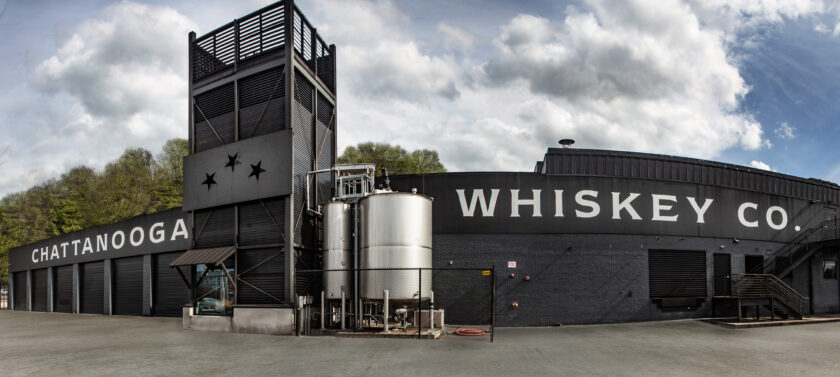Chattanooga Whiskey Company
In 2011, Chattanooga Whiskey founders Tim Piersant and Joe Ledbetter inquired of the Internet, “Would you drink Chattanooga whiskey?” It was a coy question because whiskey making in Hamilton County, Tennessee, where their future company would be located, was illegal at that time and had been since 1909. In fact, when their campaign got underway, only three counties in the Volunteer State allowed distilling.
It hadn’t always been that way. Pre-Prohibition, Chattanooga was a burgeoning whiskey town with more than thirty distilleries on Market Street alone (the same street that would eventually become home to Chattanooga Whiskey’s standalone experimental facility). But as the 21st century got underway, Chattanooga was a rusty southern railroad town ready for a reboot. What started for Piersant and Ledbetter as a joyful internet dust-up gained teeth as a legitimate lobbying campaign (“Vote Whiskey”), and in 2013, Tennessee law was repealed, and Chattanooga Whiskey took a step towards becoming a reality.
Having upended the law, Chattanooga Whiskey Company’s next task was to “challenge the paradigm of American whiskey.” Buying a stock of contract MGP juice, the company set out on a relentlessly curious voyage of flavor exploration that took nearly two years. Having tasted 100 barrels of experimental whiskey, the partners, huddling with founding distiller Grant McCracken, discovered a whiskey that matched their vision. In 2019 they began scaling up “barrel number 91” as the anchor brand for their newly christened “Tennessee High Malt” style.
Tennessee High Malt embodies the brewer’s mindset of highlighting the flavors of distinct malted grains. “Great whiskey comes from great beer,” says McCracken, and this philosophy informs each stage of Chattanooga Whiskey’s production. Their core 91 Proof Straight Bourbon offers, from grain to glass, a clear picture of how production reflects intent. As a straight bourbon, the expression of course has a representative proportion of raw yellow dent corn. But it also contains a generous 25% proportion of specialty malted grain, itself composed of 12% pale malted rye, 7% caramel malted barley, and 6% honey malted barley. The mash is fermented over seven days at a low temperature, using a specially selected yeast strain conventionally used in single malt production. This style of fermentation actively promotes the development of esters and phenols—compounds that present distinctive fruit and spice notes. Low entry proofs finish the work the long fermentations started, and further polish is added by aging the new-make spirit in custom-toasted char #3 and #4 barrels. In a distinctive final step, the aged spirit is married in a 4000-gallon finishing solera from which 15% is drawn at any given time for bottling.
The fact that—owing to the solera finish—there’s a little bit of the original Barrel 91 in every bottle celebrates the company’s journey and the incredible effort and innovation required to bring a compelling whiskey to market. “Product integrity,” McCracken notes, “is almost synonymous with storytelling. We start off with an idea and then the product is supposed to tell that story through its details.” Speaking to his approach to distilling, McCracken puts a bow on Chattanooga Whiskey Company’s first 10 years: “Making a whiskey is really about listening to the product … listening to what it tells you to do at every step … if you listen to what it tells you to do, you will make an ideal product.”




